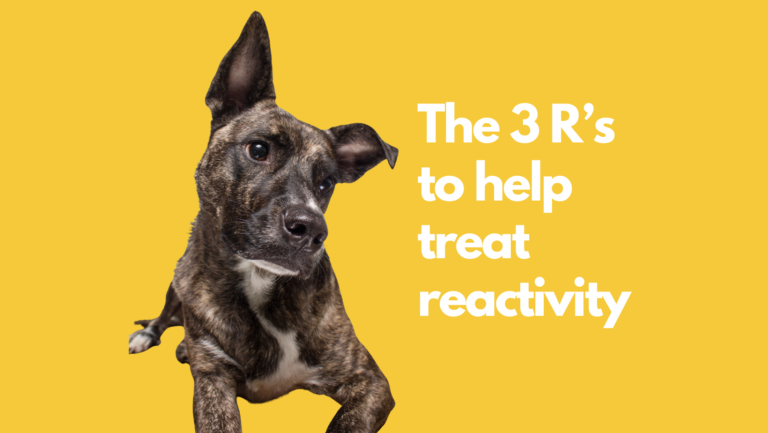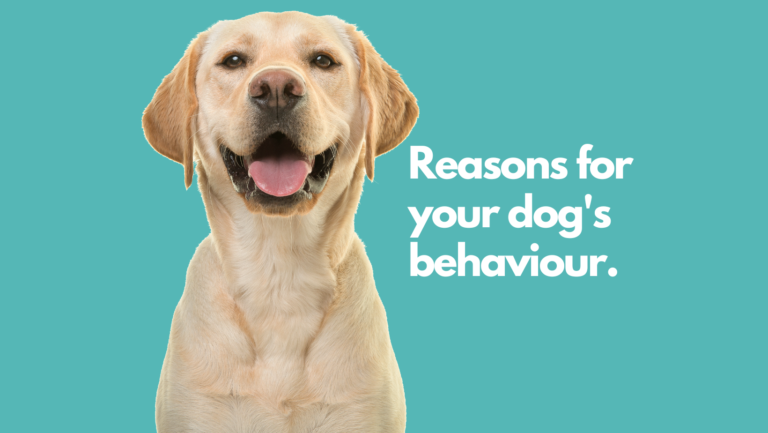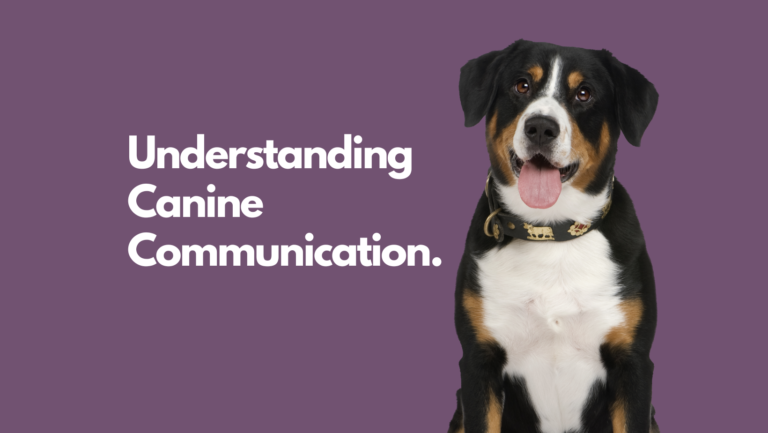Unmasking the myths of pet parenting.

Ever felt like you and your pet are on different wavelengths? Turns out, a big reason for that could be the way we communicate with our dogs. It’s not uncommon for behavioural issues to crop up when we unintentionally treat our pets like little humans, a fancy term called anthropomorphism.
In this blog, we’ll explain why it’s easy to fall into the trap of seeing our pets as mini versions of ourselves. I say, blame it on the constant media bombardment—movies, TV shows, and books that paint a not-so-accurate picture of how animals behave. We’ve even bought into outdated ideas like the “dominance myth,” which science has long debunked!
Sure, feeling a bit parental towards our pets is normal—we all do it. But there’s a catch. When we start expecting our pets to read our minds and feel what we think they should feel, things can get tricky. Dogs are not furry people, and that’s a big part of why we love them so much!
As a species, dogs have survived for so long in their present package because of their ability to adapt. In my opinion, dogs are one of the most special creatures on the planet because of their ability to adapt to just about any environment, from camp followers to trusted companions. This adaptability has, over the ages, in many ways been the dog’s saving grace and is what has kept the species from extinction.
We have to realise that for today’s modern-day dog to fit into our hectic lifestyle, we need to be able to understand some of the things that make him tick. For example, dogs do not have emotions such as guilt. Your dog is not sorry when he has stolen the roast beef off the table – why should he be? It tasted good! Stealing the roast beef off the kitchen table, from the dog’s point of view, was a pleasant experience! There is no logical reason for your dog to feel guilt. It is an emotion that would have no place in his world!
The “hang dog” expression your dog shows you – grovelling at your feet (your perception of him knowing that he is “being naughty”), is his submissive reaction to what he perceives as your assertive (possibly threatening) behaviour. Think of your body language and how the dog would interpret it as aggression. The dog is exhibiting submission as an avoidance behaviour, which is really smart, as the dog is telling you that he is not challenging you or threatening you and is not looking for confrontation. That is certainly not guilt! What many humans do, then, is to give the dog a smack to “teach him a lesson”.
The dog – perceiving that the human did not fully understand the initial message of submission – will sometimes even go as far as lying on his back and urinating. Urination is a final show of submission.
At this stage, the poor confused pup is undergoing a change in the relationship with his caregiver/parent substitute. He is learning not to trust his owner – He is learning NOT to have faith in his owner – He is learning not to feel safe in his owner’s presence! In many instances, the relationship becomes doomed forever, and if continued in this way, your dog could well end up a nervous, fearful, and often aggressive individual – largely due to self-preservation!
EMOTIONS AND COMMUNICATION
Dogs communicate and interact with us in similar ways that they interact together – as dogs in their family units! Dogs probably ‘assume’ that everyone understands their language as it works within their own species. It is, therefore, important for us to become more aware of the body language of dogs. For example, when calling a dog to you, if you bend over him, you are doing two things at once and actually sending the dog opposite confusing signals. By leaning over the dog (which, to a dog/pup, is very threatening body language), you are actually soliciting submission from the dog. This, coupled with the voice cue “come”, is a total contradiction in terms.
Mature dogs that live together in a group RARELY send conflicting signals or instructions to juveniles or puppies. So, from the dog’s point of view, he has received a conflicting or confusing signal. So then, what does he do? The “clever” dog (seeing your mixed signals) and anticipating your confusion does the smart thing. The “clever dog” ignores you. The human reaction to this is that the dog is not listening – again – or that the dog is being naughty. However, it could simply be mixed signals and a lack of inter-species communication skills from the owner.
Another good example is a client whom I recently went to see with a dog who was toileting in the house, behind couches and in quiet corners (but not in sight of the owner)! When a history was taken, it seems that the poor dog, as a pup, had been severely punished and reprimanded for every “accident”.
The dog did not understand that the owner was angry about the LOCATION of the toileting; it would have ‘assumed’ simply that the owner did not like it when he toileted in her presence – the location (from the dog’s point of view) was irrelevant!
Consequently, the owner could walk around the garden indefinitely, and there was no way that the dog was confident enough to relieve itself in her presence. The owner had taught the dog that it was “bad” to relieve itself in front of her. The cure to that scenario was to re-teach the dog a new set of toilet manners using positive reinforcement – the general rule being to reward the positive and ignore/ redirect the negative, as punishment tends to increase behaviour because it raises the levels of stress and anxiety for the dog – and often stress is presented by various behaviour problems, especially destructive behaviour and aggression. Remove the stress, and the problem is often solved!
Back to communication! Dogs communicate by utilising, first of all, eye contact, then body language, and then vocalizations.
I always encourage my students and clients to visually show their dogs when they are pleased with them – smile. When we smile, our whole body language changes positively. Although some researchers state that one should not smile at dogs, as in their language, it is a physical sign of aggression, I have found that when accompanied by positive, appropriate body language, dogs soon learn to interpret our human smile as a reward. This is often seen in obedience-trained show dogs, where, in the higher classes, if a handler smiles, he would lose points for having given a second cue.
Remember: Leaning forward is intimidating, and leaning back is inviting. Laughter is also a very useful tool with animals – if your puppy is fearful of something – laugh!
Considering that we are the only species of animal that bears its teeth to show pleasure, it should give you a good idea of how good the dog is at interpreting human behaviour and body language!
When two strange dogs meet for the first time, they initially go through a greeting ritual. They check out each other’s rear ends, which are full of wonderful smells (these are pheromones and tell each other a story). Thereafter, their body posture will show:
Play – open mouth, soft eyes, dipped shoulders, head to one side, and a floppy, bouncy sort of reversed bunny hop, which is important as it gives out a clear signal to the other dog that he wants to be buddies and is an initiation of play. His body language would appear ‘soft’ and non-threatening.
Or the body language could stiffen, the shoulders set, and the dog’s weight is distributed to their forelimbs, their eye contact becomes fixed (a hard eye), and their face is turned away (avoidance behaviour) – again, a clear signal is given, back off.
Generally, if left to their “own” devices, without too much human intervention, dogs work this out for themselves. And on the whole, if a challenge is given, the less confident animal usually withdraws. The worst thing humans can do is to tighten the leash and persuade the dogs to “be nice” and “make friends with the nice little doggie”.
This most likely will increase the stress levels of the dogs and often increase their reactivity to fight. First-time introductions should be on neutral ground with the dogs on long loose leashes (with two handlers, of course – one per dog). The handlers should be as non-influential as possible but should be aware and ready to intervene if necessary. The dogs should be allowed to go through the natural greeting ritual without the people making a fuss.
DO NOT RESPOND TO AGGRESSION WITH VIOLENCE.
Punishment, either physical or verbal, has no place in the home environment, puppy school or dog training school. Be a good role model for your puppy and or dog, and do not teach the dog to solve problems by using aggression/force. Distractions are useful as long as they are varied and not overdone. Owners should learn to be mentors to their pups. A good saying to owners is: “Be bossy (i.e. learn to make decisions and rules), but do not be a bully!”
Punishing your dog for something you may find inappropriate may teach them that you are unsafe and unpredictable. Dogs will behave naturally as they do for their species; we forget that, at the end of the day, they are dogs. Not people and our worlds are so different.
If your dog has growled at you or someone, it is not a personal insult. That dog is being a fantastic communicator and telling you that he is not happy and uncomfortable in a situation, and if the situation continues, he will have no other choice but to bite. A growl is a warning and should not be punished or reprimanded. You may unintentionally suppress the behaviour of them warning by growling, and the next time the dog wants to warn that they are uncomfortable, they may skip that warning and escalate into a bite.
Avoid any confrontation with your dog/ puppy.
All strangers should approach your puppy in a non-confrontational manner from the side, with the head and eye contact averted, shoulder first, not directly from the front and avoiding bending or towering over your puppy/ dog, in order to lessen the feeling of being threatened that will leave them with a negative association.
In the past, many animals were trained using one method and one method only. This method was FORCE. Uninformed, ignorant trainers often use extremely harsh and sometimes cruel methods to force the animal to conform and comply! This often resulted in the animal exhibiting fearful and submissive behavioural responses. A dog trained in this manner would not be a happy worker and most likely did the task that was asked to avoid a negative consequence.
It is now a commonly known fact that STRESS INHIBITS LEARNING – for both pets and people! The best way to enhance the learning process is through patience, understanding and reward-based learning.
To produce a well-adjusted dog, the modern approach is to PRAISE AND REWARD all positive behaviour. The more you reward what you want your dog to do, the higher the chances are that the desired behaviour will be repeated in the future.
DON’T RESPOND TO negative behaviour. When we praise and reward behaviour that we like, it reinforces that behaviour pattern, as the dog finds the behaviour rewarding. E.g. If the dog jumps and we avert our body and don’t respond, and we only give them attention when all four paws are on the ground, they will likely learn that jumping doesn’t get you attention but standing still does.
If you can’t ‘ignore’ a behaviour, then redirect it to another behaviour. E.g. If your dog is jumping up, ask for a ‘Sit’, or only reward and praise when the dog is standing, called ‘all four on floor’. Over time and consistency, the dog will associate the praise and attention with the desired behaviour you like, as the jumping behaviour is not working., thus decreasing that behaviour. This redirection of behaviour and rewarding an incompatible behaviour is the basis of effective dog training.
By using positive reinforcement, then, your relationship with your dog is never negatively affected.
Direct punishment (hitting a pup or using a cross voice) teaches one thing, and one thing only – it teaches your puppy to be afraid and to distrust people – including you!
NEVER punish your pup when he has been called to you or comes to you, or you will be teaching him NOT to come when he is called, and he will avoid you.
Puppies and dogs being strangled by check/choke chains, being jerked off their feet by trainers and handlers, etc., cannot be considered training. These torture methods are cruel and should be considered as another form of ABUSE. Many devices that are marketed as “training equipment” are very cruel, including:- electric shock collars (that deliver electric shocks), pinch or spike collars (they have prongs that dig into a dog’s neck), choke chains (they cut off a dogs air supply) – all of these “training aids” MUST be considered cruel. In fact, anything that can inflict pain or discomfort on a puppy or dog has no place in learning and should be considered cruel, unnecessary, and, again, ABUSIVE.
Animals always behave in a manner that is natural for their species. Therefore, technically – there is no good or bad behaviour, for if behaviour is natural – how can it be bad? It can rather be described (in human terms) as simply acceptable and unacceptable behaviour. For example: It is natural for a dog to urinate. However, (from our point of view) it would be HIGHLY inappropriate for it to urinate on the lounge carpet! As we have removed the concept of good and bad, and as an animal, the dog is at all times behaving in a natural manner for his species – he, therefore, cannot be held culpable.
The relationship between humans and dogs should not be a dictatorship, and humans should try and adjust the unrealistic expectations of their dogs. Dogs are our companions and a part of our family. They are not with us for as long as we would like, and by understanding our dog better and using positive-based reward methods, we create a wonderful, trusting relationship that lasts a lifetime.
Tags
What do you think?
Related Articles

The 3 R’s to help treat reactivity
Training your dog is not just about teaching them to listen and ‘fixing’ unwanted behaviours; it’s about creating positive associations with their environment and building

Reasons for a dogs behaviour
Dogs behave the way they do for many reasons. They do NOT do things deliberately to be stubborn or ‘naughty’, nor do they aim to

What is Dog Body Language?
Our canine friends have an intricate language of nonverbal communication known as body language. Body language is the way a dog uses his or her

